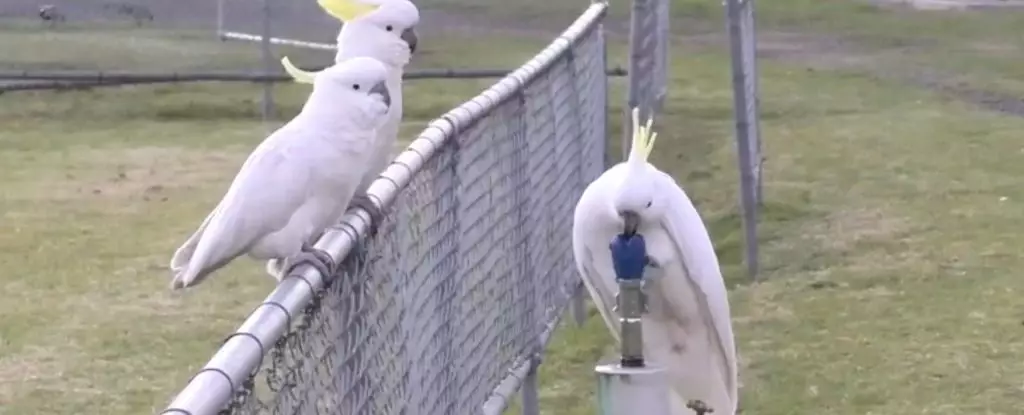In the lush, diverse landscapes of Western Sydney, a remarkable phenomenon has emerged that underscores the astonishing intelligence of sulfur-crested cockatoos (Cacatua galerita). This species, already celebrated for their guile, has shockingly adapted to their environment by learning to operate park water fountains. The clever antics of these birds not only highlight their cognitive capabilities but also challenge our preconceived notions about animal ingenuity. Such behaviors can reshape our understanding of avian interactions with human infrastructure.
Innovative Problem Solving
Historically, these cockatoos have proven their intellect by mastering the manipulation of wheely bins to access food. Now, their ability to engage with a twist-handle drinking fountain shows a sophisticated understanding of mechanical processes that many might assume only humans could manage. The complexity involved in this task cannot be understated; the cockatoos have developed a sequence of actions that involves coordination between their feet, beaks, and body weight to initiate the water flow. This isn’t just mimicry—it’s an example of problem-solving that reflects a deep adaptability to urban settings.
The Research Behind the Revelry
The investigation into the birds’ newfound skill was led by Barbara Klump and a team from the Max Planck Institute of Animal Behavior. Over a span of 44 days, they observed the behaviors of these cockatoos through motion-triggered cameras, documenting 525 attempts to drink from the fountain. With a notable success rate of 41%, the findings were not only fascinating but also indicative of the social learning processes within this avian community. This statistical insight points to the possibility that these actions have become a shared tradition among local cockatoos, with knowledge cascading through their social structures.
A Cultural Shift Among Birds
The observations raised intriguing questions about the motivations behind the cockatoos’ behavior. While it may first appear that they are simply seeking hydration, the researchers proposed alternative theories. Perhaps the water from these fountains is perceived as more appealing than other available sources, or even that the social gatherings at the fountain provide safety from predators. The concept of contrafreeloading—choosing a more complex food acquisition method over an easier one—may also be at play, suggesting an emergent cultural practice among these birds that transcends mere survival instincts.
A Call to Respect Our Feathered Neighbors
As these sulfur-crested cockatoos continue to impress with their intelligence and adaptability, it begs the question of our responsibilities as humans sharing this urban habitat. Acknowledging their presence and accommodating their behaviors could lead to enriched coexistence. Observing and respecting this intriguing adaptation can provide us insight into the vibrant, complex tapestry of urban wildlife. Rather than viewing them as pests, we should celebrate their innovation and reframe our understanding of the interactions between human-made environments and wildlife.


Leave a Reply